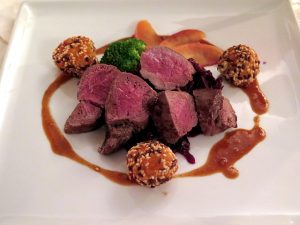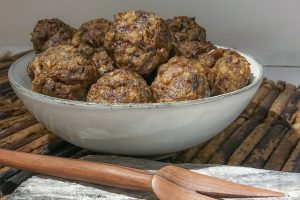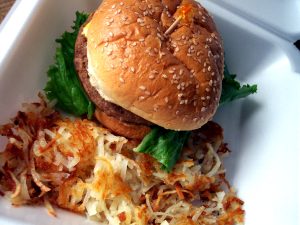Wild Game and Specialty

Wholesale Venison, Elk & Buffalo
Tank’s Meats is a reliable wholesale specialty meats supplier to the Northwest Ohio area. For the adventurous cook, adding venison, elk, buffalo, and game birds to the menu adds various textures and flavors. Venison, Buffalo, and Elk all look and cook similar to beef, but are leaner and healthier. The flavors are quite different and not enjoyed by everyone. People either seem to love it or hate gamey flavors. Careful cooking and choosing side dishes to balance does help. Reminder: It is important not to overcook these meats as they can become tough.
Wholesale Buffalo Meat

The most widely accepted of the specialty meats. It is considered to be a more sustainable choice than beef, as buffalo are raised on open range and require less land and water than cattle, and is much healthier. In terms of taste, buffalo meat is often described as being leaner and more flavorful than beef. Some people say that buffalo meat has a slightly sweet, mineral-like flavor, while others say it tastes like beef but with a more complex flavor. It is important to note that the taste of buffalo meat can vary depending on the animal’s diet and the way it is cooked. Buffalo is commonly used for burgers, chili, steak, roast, sausage and lean jerky.
Wholesale Elk Meat

Wholesale Elk meat has a more intense flavor. It is leaner than beef, with less fat and calories. Some people describe the taste of elk as being slightly sweet, with a hint of gamey flavor. Others say it tastes like beef, but with a more complex flavor. It is important to note that the taste of elk can vary depending on the animal’s diet and the way it is cooked.
Wholesale Venison

Venison has a slightly gamey flavor and is not enjoyed by everyone. The gamey flavor can be reduced by soaking the meat in a marinade or brine before cooking. Venison can be used for steaks, roasts, burgers, sausage, or jerky.
Cooking Specialty Meat: venison, elk, and buffalo

- Acid helps to tenderize wild game. Soaking the meat in a marinade made with acidic ingredients, such as vinegar, lemon juice, or wine, for several hours or overnight will help to break down the tough muscle fibers and make the meat more tender.
- Cook wild game meat to medium-rare or medium. Overcooking wild game will make it tough and dry. Aim for an internal temperature of 130-140 degrees Fahrenheit for medium-rare or 145-150 degrees Fahrenheit for medium.
- Use a meat thermometer to check for doneness. This is the most accurate way to ensure that your meat is cooked to the desired doneness.
- Marinate or brine before cooking. This will help to add flavor and moisture.
- Don’t overcrowd the pan when cooking. This will help to prevent the meat from steaming and becoming tough.
- Use a high-heat cooking method, such as grilling, broiling, or pan-frying, to cook. This will help to seal in the juices and prevent the meat from drying out.
- Serve wild game meat with flavorful side dishes. This will help to balance out the gamey flavor. Some good side dish options include roasted vegetables, mashed potatoes, or wild rice.




